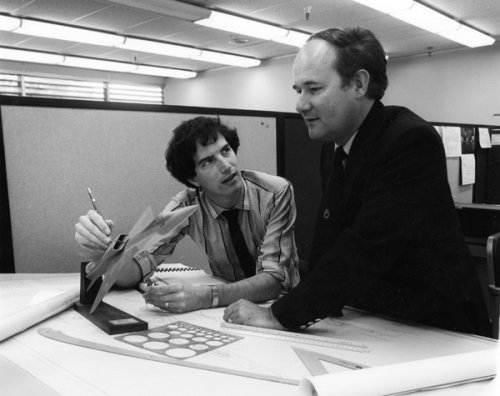Northrop Aircraft Corporation
Compiled by Steve Pace
N-1, proposed two-engine flying wing bomber - N-1M scale model
N-2, XP-56 "Black Bullet," MX-14 (two built)
N-3, single-engine float-equipped patrol bomber - N-3PB for Norway
N-4, interceptor pursuit
N-5, interceptor pursuit
N-6, single-engine fighter for USN
N-7, wind tunnel model (no other information)
N-8, two-engine night interceptor pursuit, XP-61 (2), YP-61 (13) and production P-61A Black Widow, MX-563
N-9, four-engine flying wing bomber, XB-35, MX-140 (1/3rd scale models flew a N-9M, N-9MA and N-9MB designations)
YB-35
YB-49, MX-661 (shows MX-51 on company document but that MX number was erroneous)
N-10, Turbodyne turboprop engine for U.S. Navy, XT37-3, MX-562
XT37 engine evaluation and test by General Electric, MX-562-A
N-11, turbo supercharger for XT37
N-12, "Rocket Wing," powered test bed for XP-79, MX-324
MX-334, unpowered glider to test aerodynamic feasibility for XP-79 program
N-13, welding development for magnesium alloy
N-14, rocket-powered flying wing interceptor pursuit, XP-79, MX-365
XP-79B “Flying Ram”, twin-turbojet-powered version of canceled rocket-powered XP-79
N-15, twin-engine cargo airplane
N-16, one-engine jet bomb, JB-1, MX-543 and two-engine jet bomb, JB-10, MX-554
N-17, Prothesis, investigations into artificial limbs
N-18, one engine jet bomb, JB-1B
N-19, Turbodyne turboprop for U.S. Army Air Corps, XT37-1, MX-562-B
N-20, photographic reconnaissance airplane, XF-15A Reporter, MX-758
F-15A-1-NO
N-21, night intruder, XP-61F, MX-563
N-22, water craft
N-23, three-engine cargo airplane – Pioneer
N-24, XP/XF-89 Scorpion, MX-808
N-25, guided missile, MX-775 - became Snark
N-25B, bomber defense decoy missile
N-26, X-4 Bantam (previously XS-4), MX-810 (also known as Skylancer)
N-27, deceleration of air screws (propeller reverser), MX-981
N-28, Rand Research
N-29, Nuclear Energy Propulsion for Aircraft (NEPA) Research
N-30, airborne vehicle (crash fire fighting)
N-31, medium bomber
N-32, assault transport, YC-125 Raider, MP-97
N-33, castering gear
N-34, ongoing NEPA Research; renamed Aircraft Nuclear Propulsion (ANP)
N-35, all-weather interceptor, F-89A, F-89B and F-89C Scorpion, MP-80
N-36, Pioneer
N-37, photographic reconnaissance airplane, RB-49A
N-38, photographic reconnaissance aircraft, RB-49A
N-39, RB-35B, YB-35 conversion to…
N-40, YB-49 flying wing bomber prototype, MX-661
N-41, YRB-49A
N-42, zero length launcher (ZELL) undercarriage, MP-131
N-43, test ZELL undercarriage for N-42, MP-131
N-44, missile guidance system for MX-775 Snark
N-45, turbo test bench
N-46, RB-49
N-47, RB-49
N-48, reductor test, EB-35
N-49, YF-89A Scorpion
N-50, YB-49, MP-56
N-51, YB-35B, MP-48
N-52, YRB-49A, MP-55
N-53, interceptor
N-54, RF-89A Scorpion
N-55, patrol airplane
N-56, dielectric panel
N-57, launch recorder for MX-775 Snark
N-58, ejection seat
N-59, carrier-based bomber airplane
N-60, anti-submarine warfare airplane
N-61, U.S. Navy fighter aircraft
N-62, Polar shelter
N-63, vertical take-off and landing (VTOL) convoy fighter, ‘POGO’
N-64, guidance system for MX-775 Snark
N-65, 1954 Interceptor program, WS-201A
N-66, production for Motorola
N-67, YF-89D Scorpion
N-68, F-89D Scorpion
N-69, XSM-62 Snark, MX-775
N-70, Sextant
N-71, YF-89E Scorpion; J71 engine test bed
N-72, armed systems for SM-62A Snark
N-73, launch booster rockets for SM-62 Snark, MP-131
N-74, tactical transport
N-75, photographic recorder for SM-62 Snark
N-76, flight characteristics
N-77, jet engine
N-78, magnesium protection
N-79, plastic nose section
N-80, N-69 (MX-775) flight characteristics
N-81, F-89F Scorpion
N-82, YF-89F Scorpion
N-83, Martin turret
N-83, hydraulic liquid test
N-84, Martin turret
N-85, missile installation - Hughes GAR-1, GAR-2 Falcon (MX-904) on F-89H/J Scorpion
N-86, 30mm gun installation (Gun-Val)
N-87, T-110 rocket launcher (Gun-Val)
N-88, rocket-propelled carriage
N-89, deceleration engine
N-90, servo mechanism
N-91, linear deceleration
N-92, laminar flow system
N-93, hydraulic reservoir
N-94, U.S. Navy embarked fighter
N-95, arrester barrier tests
N-96, bomber defense missile (BDM)
N-97, laminar flow system
N-98, fuel system
N-99, titanium fuselage
N-100, zinc pressings
N-101, magnesium moldings
N-102, lightweight jet fighter - Fang
N-103, all-weather interceptor
N-104, molded door
N-105, T-110 rocket launcher
N-106, steel moldings
N-107, jet propelled carriage
N-108, no information
N-109, Project HEAT
N-110, installation of J71 in F-89D
N-111, YB-62 Snark
N-112, target designator, QB-62 Snark
N-113, Project OGRE
N-114, Project SUPER OGRE
N-115, SM-62 ballistic warhead
N-116, vibrations research
N-117, installation of E-9 fire control system in F-89D (MX-904)
N-118, vibration dampener
N-119, heating structures
N-120, no information
N-121, Project DELTA
N-122, reinforced wing testing
N-123, air intake research
N-124, pilotless reconnaissance air vehicles - RSM-62 and RB-62 Snark (MX-1960)
N-125, warhead studies
N-126, Project DELTA SCORPION, Long Range Interceptor Experimental
N-132, Strategic Fighter Aircraft
N-134, High Altitude Missile
N-135, Strategic Missile
N-138, All-Weather Interceptor, F-89H
N-144, Long Range Interceptor
N-149, Long Range Interceptor
N-156T, trainer
N-156C, YF-5A
N-156F, F-5B
N-160, Project BELL BOY
N-164, Long Range Interceptor (WS-202A) – F-108
N-167, Long Range Interceptor
N-176, Supersonic Interceptor
N-184, lightweight medium-range interceptor
N-250, BLC airplane (X-21) from Douglas B-66
N-251, V/STOL operational demonstration aircraft
N-252 to N-284
N-285, USN advanced jet trainer
N-286, USAF close support fighter bomber
N-287, Northrop-produced Hawker P-1127 Kestrel
N-288, manned bomber attack missile
N-289, V/STOL demonstrator
N-290, high-lift F-5
N-291, advanced F-5A tactical fighter
N-292, F-5 suck-in doors, two-position gear and 4,350-lb thrust engines
N-293, Condor
N-294, advanced USN jet trainer (F-5B)
N-295, F-5B USN trainer (magnesium to aluminum)
N-296, F-5B USN trainer (strength L.G.)
N-297, inflated MAP F-5 configuration
N-298, F-5A-40-NO modification program to F-5C Skoshi Tiger configuration
N-299, advanced F-5 installation of J-1A (J100) engine
N-300, F-5X (P-530) - stretched F-5E Tiger 2
N-301, modified F-5B for TAC companion to N-298
N-302, Norway follow-on (F-5A)
N-303, Norway follow-on (F-5B)
N-304, USAF reconnaissance F-5 (RF-5), s/n 6058
N-305, F-5C – follow-on to N-298 - Skoshi Tiger
N-306, follow-on to N-301 (F-5D)
N-307, USAF reconnaissance RF-5 for Military Assistance Program
N-308, A-X Program (see N-312, N-320)
N-309, NASA V/STOL jet operations research aircraft
N-310, Advanced Tactical Fighter, F-X Program (P-700)
N-311, F-5-21 prototype
N-312, turbofan-powered A-X, became N-320, then YA-9A
N-313, V/STOL tactical fighter
N-314, twin GE-15-powered advanced E/M fighter (P-600 YF-17 Cobra)
N-315, baseline advanced E/M fighter
N-316, single F100-powered advanced E/M fighter with double air inlets
N-317, single GE-15 powered advanced E/M fighter
N-318, twin non-afterburning GE-15 powered advanced E/M fighter (P-600 YF-17 Cobra)
N-319, single F100-powered advanced E/M fighter with single air inlet
N-320, A-X competitive airplane, became YA-9A
N-321, P-610 Lightweight Fighter

